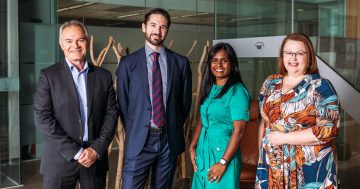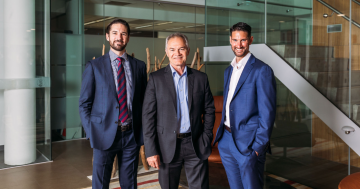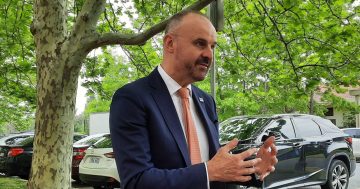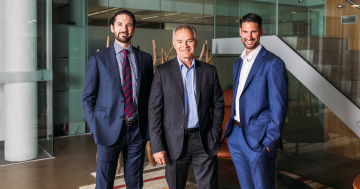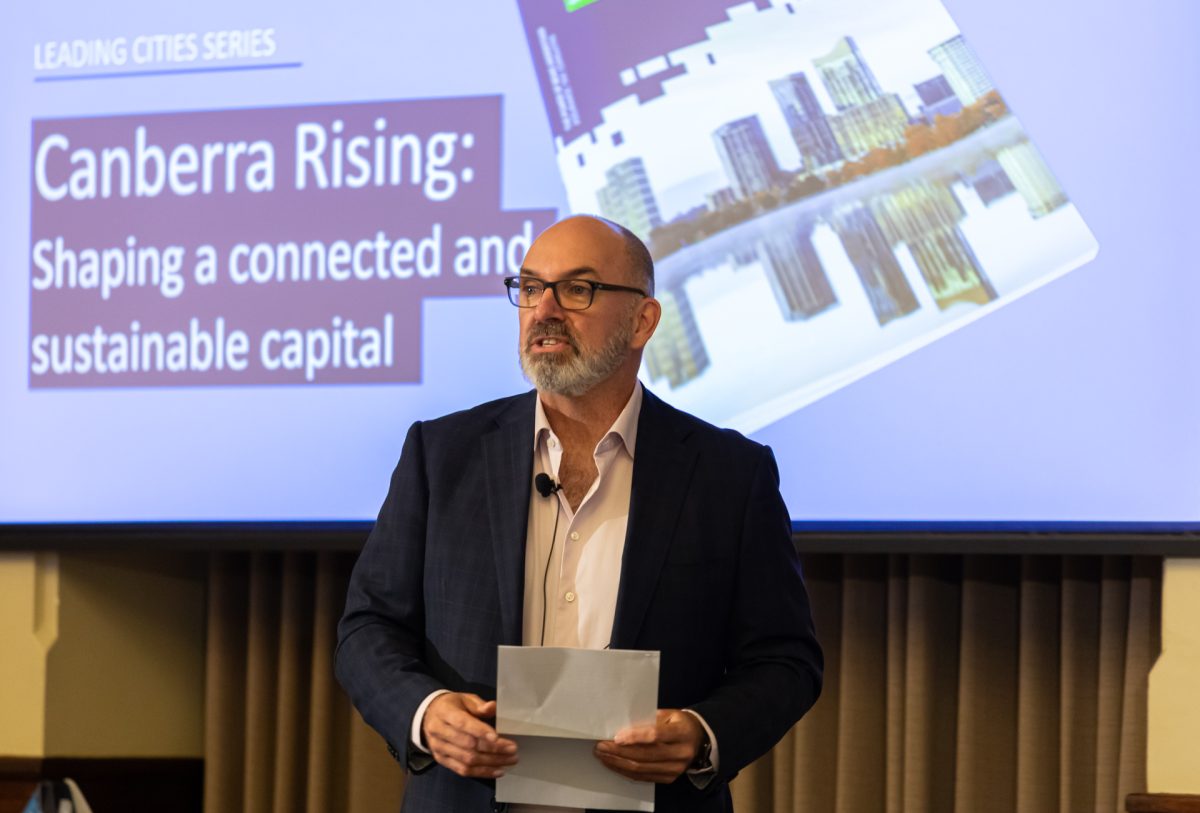
RSM in Canberra managing partner Andrew Sykes presented key findings in the Leading Cities Report at the Canberra Rising event. Photo: Michelle Kroll.
Canberra’s longstanding image as a government town may be on the way out – and that’s exactly what it needs, according to a new report on the city’s economic future.
The latest instalment of the Leading Cities Report on Canberra commissioned by RSM stated: “The focus of Canberra’s future may not be where you expect. Its reputation as a government city could be changing”.
The report showed the share of public service jobs in Canberra was shrinking, while the private sector was picking up pace – a shift that could redefine the city’s economic identity.
But RSM in Canberra managing partner Andrew Sykes said more than that, the mathematics was clear.
“Projections show Canberra will grow to 700,000 by 2060. That’s growth in excess of 50 per cent in 35 years and the public sector isn’t going to fill that growth,” he says.
“There is also continued pressure, as we saw during the last election, to take government jobs out of Canberra. While the government will always be a significant employer, for the future of the national capital, we can’t rely solely on the public sector for our growth and sustainability.”
Mr Sykes urged a “defined approach to growing revenue and the economy”, rather than simply managing costs.
While the Leading Cities Report found small to medium-sized enterprises (SMEs) were on the rise in Canberra, boosted by 2024 procurement reforms that made it easier for federal agencies to engage them, Mr Sykes said real progress depended on looking beyond Canberra’s already strong business-to-consumer and business-to-government sectors to strengthening the city’s business-to-business market.
Strategies could include significant reforms to tackle the factors that undermine Canberra’s business appeal, such as high payroll tax, rates and workers’ compensation insurance.
“Those direct costs of business can make a difference. You only need to look at the growth of Queanbeyan over the past decade or two to see the evidence of that,” he said.
“We have all the infrastructure we need to support big business, the government has done a good job of building that platform. Now we need to make the ACT competitive to attract and retain big business.
“We also want to incentivise firms that maintain their infrastructure here. We want firms that don’t just come to hire people, but have a long-term commitment to Canberra and region.”
Another key strategy looked at leveraging Canberra’s competitive advantages in sustainability and innovation.
Mr Sykes said as it was emerging as a world-class city of innovation, creativity and knowledge, Canberra was rich in “entrepreneurial spirit” that, with the right support, could play a pivotal role in an essential labour market diversification.
“Some incredible start-ups in the technology sector have come out of this city, such as Instaclustr which sold in 2022 for an undisclosed amount that’s said to be around the $500+ million mark. Or Canberra Data Centres – a world-class business,” he said.
That innovation could be fostered through government policies but also by leveraging Canberra’s powerful university sector.
“Investing in Canberra’s university sector is crucial – not just to attract international students, but to keep them here after they finish their degrees, as part of a thriving innovation ecosystem.”
Download the full report here.
Original Article published by Dione David on Region Canberra.


